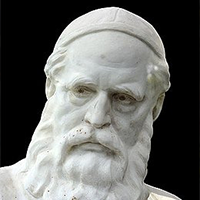Ulugh Beg Mirz
Mīrzā Muhammad Tāraghay bin Shāhrukh, better known as Ulugh Beg, was a Timurid sultan, as well as an astronomer and mathematician. Ulugh Beg was notable for his work in astronomy-related mathematics, such as trigonometry and spherical geometry, as well as his general interests in the arts and intellectual activities.
Mongol astronomer and mathematician who, although the only important Mongol scientist, was the greatest astronomer of his time. Pursuing this interest he built an observatory at Samarkand. In his observations he discovered a number of errors in the computations of the 2nd-century Alexandrian astronomer Ptolemy, whose figures were still being used. His star map of 994 stars was the first new one since Hipparchus. After Ulugh Beg was assassinated by his son, the observatory fell to ruins by 1500, rediscovered only in 1908. Written in Arabic, his work went unread by the world’s next generation of astronomers. When his tables were translated into Latin in 1665, telescopic observations had surpassed them. In mathematics, Ulugh Beg wrote accurate trigonometric tables of sine and tangent values correct to at least eight decimal places

Ulugh Beg Mirz
Date of Birth: 22 Mar 1394
Birth Place: Soltanieh,Iran
Proffession: Astronomer,Mathematician
Nationality: Iranian
Death: 27 October 1449,Samarkand,Uzbekistan


